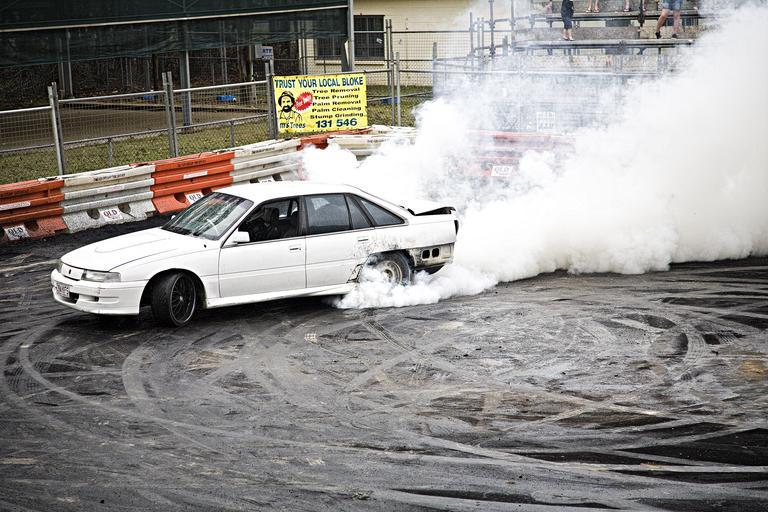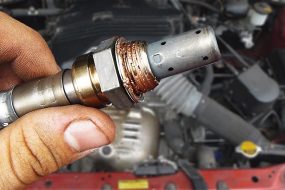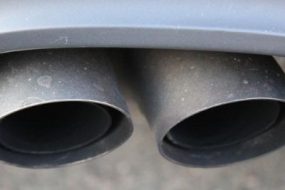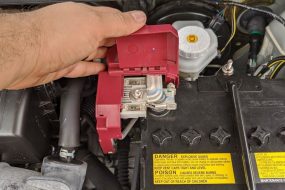
An emission test is the kind of test taken every 2 to 3 years depending on your state of residence to ascertain the level of emission your car discharge to the environment.
The idea of having a cleaner environment where everyone breathes in quality air led to an emission test, but the question is, can you pass the emission test with the check engine light on? How can you pass the emission test with the engine light on?
How to Pass Emission Test with Engine Light On
As long as you’re driving a vehicle that can be scanned using an OBD scanner, you cannot pass emission test with check engine light on. This is the honest truth.
There is no how you can pass the emission test with a check engine light on, not even with magic, and the reason is not farfetched.
When your check engine light comes on, it means that there’s something wrong with the engine compartment that needs urgent attention.
It could be a minor issue such as a bad spark plug, a loose gas cap, or even a bad mass air flow sensor. It can also be a major issue such as a blown head gasket, bad fuel injector, etc.
Whatever the reason is, your car will obviously fail an emission test if it’s not fixed before the test is conducted. In fact, in some states, the test will not even happen once the examiner sees a check engine warning light on your dashboard.
So, the best way around this is to fix whatever that must have caused the engine light to come on before the test.
Moreover, an emission test cannot be tricked. You can’t just disconnect your battery for a while and reconnect it to clear the code that caused the light, neither can you clear the code with an OBD scanner with the hope of tricking the examiner.
Before an emission test is started and completed, the car will have to go through a normal driving cycle to enable the car’s computer do its readings and calculations.
If perhaps you cleared the check engine light to trick the examiner, the test will not be completed until you get the normal driving cycle which ranges from 100 miles and above.
Therefore, you’re advised to drive your car for a while after you must have fixed and cleared the system with a scanner, and after you disconnected and reconnected your battery to avoid stories that touch.
Meanwhile, you may pass an emission test if you’re driving an older vehicle whose check engine light is on but this is not guaranteed.
Consequences of Not Passing an Emission Test
Depending on your location, not passing your emission test can prevent you from renewing your car registration which means that you can no longer drive the vehicle legally until the issue is fixed.
However, if you did the smog test far from when your car registration will expire, then you have nothing to worry about. You can continue to drive your car until you fix the issues and pass your test.
Tips to Pass Your Emission Test
Here are how to pass your emission test:
1. Ensure the Check Engine Light is not On
Passing an emission test is very easy as long as your car is in good condition. As reiterated earlier, you fix whatever that may have caused a check engine light to come on on your dashboard to be able to scale through. It is very important.
2. Complete a Driving Cycle
Car driving cycle varies and can range from 100 miles and above. Therefore, before you proceed to have your smoke test done, ensure you have driven your car for more than 100 miles especially if you recently cleared your car with a scanner or disconnected your battery. This is to enable the system to read and calculate what it needs to confirm that your car is in good condition.
If after 200 miles and your check engine light did not come back on again, you can go ahead with the smog test. This is very important.
3. Use an Injector Cleaner
Before going for an emission test, you should add an injector cleaner to your gas. This will help clean your injectors and prevent any unwarranted circumstances that may occur during the test.
4. Use a Catalytic Converter Cleaner and O2 Sensor Cleaner
Since the oxygen sensor and catalytic converter are what made up your exhaust system, it is wise to use a catalytic converter cleaner before the test. It will help to clean dirt’s in your catalytic converter as well as your O2 sensor.
5. Drive and Warm the Car
Before your emission test, ensured your car is properly warmed especially during cold weather. Do not start your smog test with a cold engine to avoid stories that touch.
6. Perform an Oil Change
Anything that can make you pass your emission test is what you should do. If doing an oil change will enable your engine to run better, then it is wise to do it before doing the test.
7. Inflate your Tires
You should avoid anything that will put too much load on your engine while doing a smog test. If having underinflated tires can cause the car to struggle to work and consume more fuel, then it is wise to have it inflated to avoid failing the test.
Conclusion
Since your car either passes or fails the emission test, it is wise to do the needful to avoid putting yourself in this kind of situation. You cannot pass your emission test with the check engine light on. It’s not possible as long as modern cars are concerned.
The essence of emission test is to ensure that the smoke coming out of your exhaust system is not harmful to the environment, so it is important to do the needful so that you can pass the test and get on with your life.









